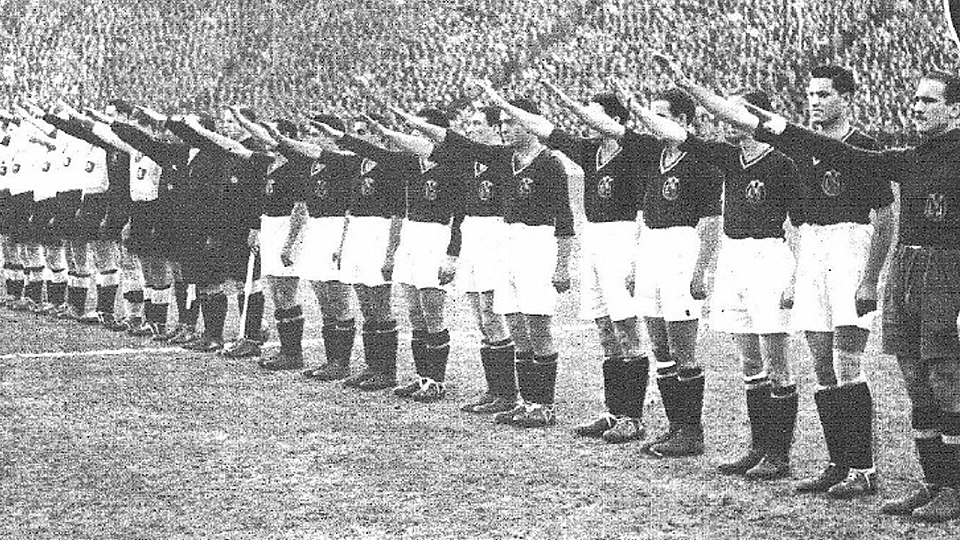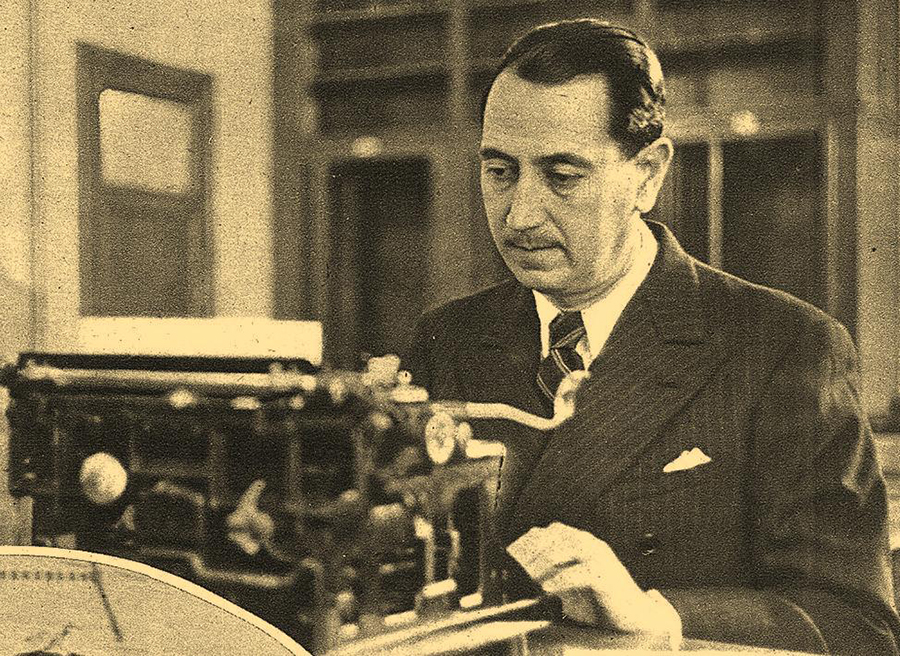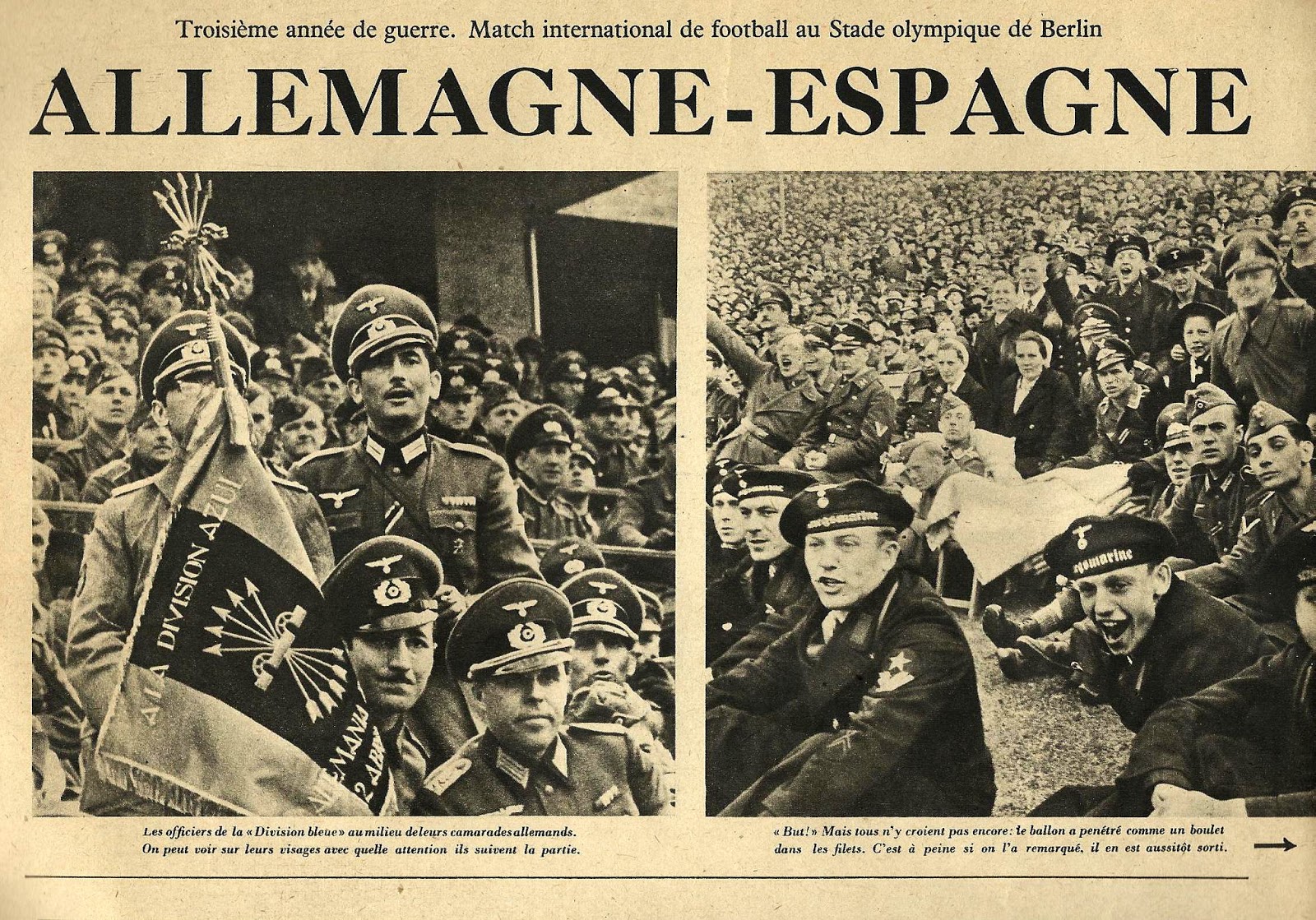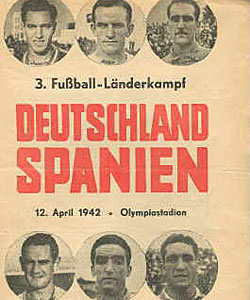National Team history (Part 8): Starting again (1941-1943)

The Spanish National Team was founded in 1920 and well and truly found its feet throughout the 1920s and 1930s, a period in which it acquired its own identity based on a founding myth "la furia" (the fury) playing style while also achieving its first sporting successes. These achievements included the silver medal at the Antwerp Olympics, a good performance in the 1934 World Cup and famous victories against England (1929) and Germany (1935). However, all this was dramatically interrupted by the Civil War, the subject of the previous chapter.
"It was necessary to rebuild everything... the Spanish national team as we know it has disappeared in its entirety... now there's nothing to rely on... it's simply a case of starting from scratch".
The Civil War caused a long five-year interruption to football in Spain (1936-41) but that pause ended in the early 1940s. At that time, the national team began to be rebuilt, at the start, under the direction of former footballer and active journalist Eduardo Teus (1941-42).
Then, after another period of impasse (1942-45) due to the challenges stemming from not being able to play international friendly matches in the midst of World War II, former players Jacinto Quincoces, Luis Casas, Pasarín, and Pablo Hernández Coronado briefly took over on the Spanish bench.
The years of wars and inactivity, as well as the lack of continuity on the bench meant that, from a tactical and organisational point of view, Spanish football became increasingly outdated. Modernisation came, from an institutional point of view, thanks to the work of the then president of the FEF, Armando Muñoz Calero (1947-50). Muñoz Calero placed the national team in the hands of the former international goalkeeper Guillermo Eizaguirre, who undertook the task of implementing the necessary tactical changes and contributing to the modernisation of the national team with the support of Benito Díaz as coach. It was upon these fundamental pillars that the team's success in 1950 was based.
The period between 1941 and 1947 was, in some respects, a period of continuity within this time of constant upheaval. A handful of coaches came and went as team manager but the fundamentals of the side remained the same in terms of tactics and players, with no major changes until 1948. Their short length of tenure exemplifies the discontinuity issue, except in the case of Teus, who spent almost two years at the helm.
After Teus, Quincoces stayed in the role for seven months, Pasarín half a year and Hernández Coronado just seven months. Furthermore, the national team disappeared between 1936 and 1941 because of the Civil War. Then between 1942 and 1945, they lacked a proper fixture list, playing only two matches in 1945, one in 1946 and another two in 1947 due to the World War. Stability and the introduction of the new tactics of the day and the modernisation of the team only came with Eizaguirre's takeover.
| Selector | Manager | Years in charge and number of matches |
|---|---|---|
| EDUARDO TEUS (Former goalkeeper) |
Francisco Bru (1941) Ricardo Zamora (1942) |
August 1940 - January 1945 (6 matches) |
| JACINTO QUINCOCES (Former defender) |
January 1945 - July 1945 (2 matches) |
|
| LUIS CASAS, "PASARÍN" (Former defender) | Ramón Encinas |
November 1945 - June 1946 (1 match) |
| PABLO HERNÁNDEZ CORONADO (Former goalkeeper) |
October 1946 - May 1947 (2 matches) |
|
| GUILLERMO EIZAGUIRRE (Former goalkeeper) |
Ramón Encinas (1947 - 1948) Ricardo Zamora (December 1948 - January 1949) Luis Casas, "Pasarín" (January - April 1949) Benito Díaz (1949 - 1950) |
May 1947 - July 1950 (16 matches) |
Between January 1941 and April 1942 Spain played six matches under Teus’ guidance: they drew 2-2 in Portugal and then beat the Portuguese 5-1 in Bilbao; they then beat Switzerland 3-2 in Valencia and France 4-0 in Seville; they were held to a 1-1 draw in Berlin against Germany and lost 4-0 to Italy in Milan. The match in Italy proved to be Teus' last match as Spain coach.
This period was characterised by a number of features that give the years 1941-42 their own personality:
1. Traditions and tactical purity
Firstly, Teus’ commitment to maintaining the Spanish traditions and tactical purity and his refusal to introduce the WM tactics used by many of the teams Spain played against in those years (Switzerland, France and Germany).
2.- A team of assistants
Secondly, Teus showed a great ability to surround himself with experienced assistants and coaches such as Paco Bru. As well as those figures, he also counted on true national footballing legends such as Ricardo Zamora for input. He was the coach in charge of selecting the players, but he delegated the daily work and more detailed team preparations to his coaches. Over the course of his time in charge, it was first Bru and then Zamora who fulfilled this other role.
In addition, Teus had his own "spies" collaborating all over Spain and even spanning Europe. Based on their scouting reports, he was able to choose his players and prepare for the matches against other national teams: "In many places I have people who inform me, because a coach cannot be, like God, everywhere. And in Portugal, the Hungarian Lipo Hertza, coach of Spanish clubs for many years, gave me advice on how to handle the internationals against whom Spain had to play".
3.- Preparation for friendlies
Thirdly, Teus was committed to preparing for international friendlies by holding training matches against regional teams (those of Castilla or Valencia) or against football teams such as Barcelona.
4.- Public communication of his ideas
He was also a coach who continuously and publicly expressed his ideas through articles he published in the press, especially in the daily sports newspaper Mundo Deportivo and in the then weekly sports newspaper Marca.
5.- Political presence
Furthermore, just after the end of the Civil War in the early 1940s, the presence of politics and references, either direct or indirect, to Franco's regime were very explicit, even in training sessions.
The head of state would not attend a national team match until 1945, but the institutional presence throughout the Teus period was in the hands of General Moscardó, as National Sports Delegate, who attended international matches and travelled to accompany the team as the most important representative of the regime. The matches played during those years were preceded by the players' raised armed salutes during their renditions of "Cara al Sol" and the shouting of "¡Arriba Franco! (Hail Franco!!)
6.- The individual style
And finally, the sixth characteristic that defines Teus' period as the Spanish manager refers to the coach's ideas as to what the national team's style of play should be and who best embodied that style.
The backbone of his team in these years consisted mainly of players from RCD Español (Cup winners in 1940), Atlético Aviación (League champions in 1940 and 1941) and Valencia (Cup winners in 1941 and League champions in 1942). This was the case, for example, against Italy in 1942 where 7 of the 11 players belonged to these three teams: Martorell and Teruel from Español; Gabilondo and Guzmán in midfield and Campos up front (all three from Atlético Aviación) and Juan Ramón and Epi from Valencia. The rest played for Sevilla (Mateos), Madrid (Alonso), Barcelona (Martín) and Oviedo (Emilín).
To prepare for the match against Germany, the FEF (Spanish Football Federation) chose the city of Barcelona as their base and Sarriá as their training facility. Spain faced the Germans for the third time in their history, taking on the German WM tactic with a system that looked to overload wide areas, especially through Emilín and Gorostiza.
The team was cheered on by the wounded soldiers from the Blue Division, who were in the Olympic Stadium in Berlin watching the match and who, at the end of the game, jumped onto the pitch to congratulate the Spaniards and carry them off the pitch on their shoulders. The 1-1 draw was almost seen as a victory by Spaniards of the day.
Teus' team stood out against the Germans, with qualities such as Martorell's great saves, Teruel's no-nonsense approach in defence and Gabilondo's leadership making the difference. They were able to get back into the match, after the Germans had taken the lead through Decker in the 76th minute, when Campos put all the penalty taking practice done with coach Zamora in the recent training sessions in Barcelona into good use by scoring an equaliser from the spot.
The duel with Germany was full of curiosities: there was no half-time break but simply a change of ends at the 45th minute. Four anthems were played: the two national anthems, as well as those of the Nazi Party and "Cara al Sol", which had become associated with Franco’s Spanish Nationalist movement.
The match was quite the spectacle and was considered by the German press to be the sporting event of the year. The Berlin Olympic Stadium on 12 April 1942 attracted 90,000 spectators, including 6,000 members of the Hitler Youth, 14,000 members of the German Army and 5,000 Spaniards belonging to the Blue Division.
Five days after playing in Berlin, the Spanish travelling party moved on to Milan to play another friendly, this time in Italy in a continuation of the Transalpine rivalry. Teus had to do without the injured Mundo for the match at the San Siro, which kicked off at 3.30 in a packed stadium and saw clear Italian dominance and a second half in which Spain were "out of their depth".
In the second half, Spain's ability to keep the 1938 World Champions at bay disappeared. Mazzola and Ferraris made it 2-0 shortly after the restart and in the 86th and 88th minutes Ferraris and Loich completed the rout.
With this result, Teus' period on the national team bench came to an end and another period of the National Team feeling rudderless would last until 1945.


